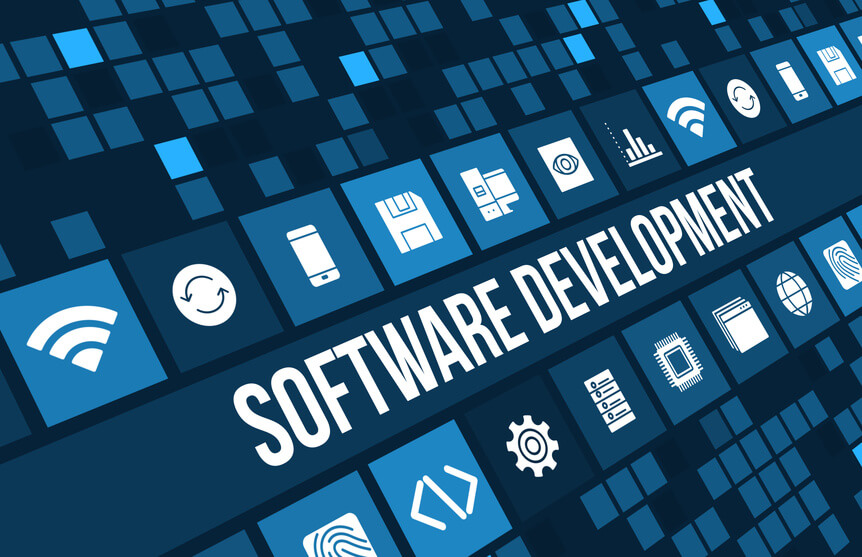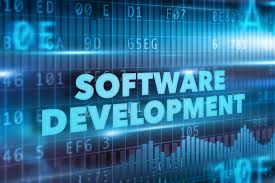The software is a collection of programming codes which contain a set of instructions to govern the overall data in a digital device. To develop software, the developers need to use interactive platforms and a simple piece of codes along with effective software tools.
Technical Steps For Developing Software
 Software Development Life Cycle(SDLC) is an effective process to design and develop the software. This life cycle defines the methodology that is used for quality improvement and executes the overall development process. To execute the software development process correctly, one needs to follow the steps sequentially.
Software Development Life Cycle(SDLC) is an effective process to design and develop the software. This life cycle defines the methodology that is used for quality improvement and executes the overall development process. To execute the software development process correctly, one needs to follow the steps sequentially.
-
Project Planning & Requirement Analysis
Requirement analysis is the most fundamental stage in the entire SDLC. It is nothing but the collection of the required data and methods performed by the senior developer team. In this stage, the survey is an important part before going to the basic project approach.
After collecting the essential data, proper planning for the quality assurance and identification of the possible risks are the crucial steps. Here, the experts take various technical approaches from different developers for getting a feasible outcome.
-
Defining Requirements
Defining the required data is the second step in the SDLC after completing the requirement analysis successfully. Now, the developers need to explain the product requirements to the market analysts and get approval from them. To perform it, a well-formed Software Requirement Specification (SRS) plays a significant role during this development cycle.
-
Perform Product Verification
The SRS plays a major role in designing the product architecture with the best outcome. Based on this architectural design and requirement specifications, the design approach becomes more effective. A perfect design approach clearly defines all the architectural modules with dataflow presentations making it easier to understand. On the other hand, the DDS feature defines the internal design.
Moreover, all the experienced stakeholders review the prepared Design Document Specification (DDS). They verify them based on some of the crucial parameters like risk assessments, design modularity, time constraints, and budget.
-
Developing The Software
The actual development starts from this stage an

d it is the vital step to build the project. The developers generate the programming code based on the final SRS and well-written DDS. The developers must follow the coding guidelines such as code optimization techniques, various programming approaches, and proper use of different programming languages, framework, etc. The coding should be as simple as possible and made hassle-free through various translators, debuggers and essential programming tools.
-
Testing
Software testing is a step that helps to know the utility of the project. It confirms whether the pieces of codes are perfectly used and appropriately placed. Moreover, it checks if all the steps of the SRS are traversed correctly or not. Testing activities identify the product related problems, which can then be tracked and fixed accordingly. Furthermore, it is retested until the product quality reaches the ultimate goal.
-
Maintenance
It is the final step in the ment life cycle. At first, the developer releases the new product within a limited segment and retests it for the business environment. Then, based on the feedback, that product is released for the target market. Finally, after a successful launch, the engineers maintain the project based on the customer’s requirements that improve the performance.
Some Important Software Development Models
The following are some of the most effective models that the Software Engineers use to design software without much hassle.
- Waterfall Model
Waterfall model is a classical and the most straightforward model used earlier for developing the software. It maintains the SDLC cycle properly but the reverse traversing is impossible in the Waterfall model. Due to the delay and inflexible revision process, it won’t generate a flawless project.
- Iterative Model
An iterative model acts as a revised waterfall model. Though it follows the basic concept of the waterfall model, the engineers can perform the iteration in each step here. As a result, the developers get the data modification facility here if necessary. Thus, the verification and testing both can be done in every step and the developers get the opportunity to include some additional data. This model is perfect for developing a small business project.
- Spiral Model
The spiral model divides the Software development stages into four quadrants. Each and every stage plays effective roles during the development processes. The developer and the analysts can analyze the risks. Thus, the developers can avoid possible risks at the initial stage. For its strong documental control functionalities, one can use it for critical software development projects as well. Furthermore, it has the capability to complete the project effortlessly within the turn around time.
Here, we have discussed the entire Software development cycle with technical specifications. Moreover, we also recommended some of the effective Software models to design the product easily and effortlessly.
